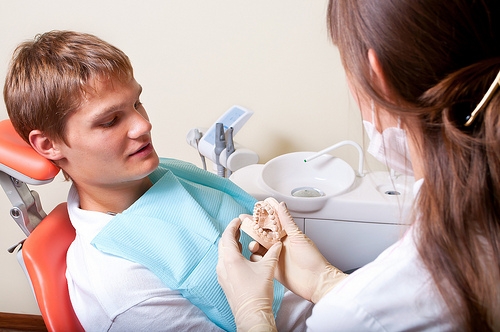June 22nd, 2023

By now, everyone knows that smoking is bad for you. But the truth is its broad-reaching health effects are not all known by everyone. This is especially true of oral health. Smoking can have serious repercussions in this regard. To give you a better idea of how smoking can affect your oral health, Dr. Kathleen Tavarez and our team have listed some issues that can arise.
Oral Cancer
Oral cancer can have steep ramifications for anyone that gets it. Surgery can be required to eliminate the cancer before it spreads to more vital parts of your body. Any type of cancer is about the worst health effect you can get, and this especially holds true to the affects that smoking has on your mouth. The type of mouth surgery required with oral cancer can leave your face deconstructed in certain areas, and it is all due to smoking or use of other tobacco products.
Tooth Discoloration and Bad Breath
At the very least, it is fair to say that as a smoker you will often have bad breath, and while you may try to cover it up with gum or mints, tooth discoloration is a whole other story. The chemicals and substances in cigarettes stick to your teeth staining them brown and yellow colors that are increasingly difficult to disguise.
Gum Disease and Loss of Bone
Another effect of smoking is the increased risk of gum disease. Your gums may start to recede, which can eventually lead to the loss of teeth. Smoking can also increase bone loss and density in your jaw which is vital to the health of your mouth. Gum disease and bone loss are two signs that smoking is definitely bad for your mouth.
When it comes to the health of your mouth, the question is not whether smoking affects your health, it's how does it affect your health and to what degree. If for no other reason than because smoking involves your mouth as its entry point, it is safe to say that it can have long-lasting and detrimental consequences on your oral health.
To learn more about smoking and your oral health, contact our Menlo Park or San Carlos, CA office to schedule an appointment with Dr. Kathleen Tavarez.
June 15th, 2023

This is one of the most common questions that is asked at Tavarez Orthodontics and, unfortunately, it does not have a simple answer. Just as every patient we see is unique, so is their treatment plan. Some patients have very simple problems which require less appliances and time, while other cases are much more complicated and may require multiple appliances and phases.
The treatment fee usually reflects the amount of orthodontic work required to complete the treatment plan. The only way to find out how much braces will cost is to schedule a consultation with Dr. Kathleen Tavarez. During your consultation, we will perform a complete oral examination, listen to your concerns, and explain how we will address your needs.
Our findings will include the cost of orthodontics and how long the treatment will take to complete. Give us a call today at our convenient location in Menlo Park or San Carlos, CA for a consultation and discover how quickly we can make you smile!
June 15th, 2023

Dr. Kathleen Tavarez and our team are excited to offer Invisalign Teen, a clear alternative to braces that’s just for teens! With Invisalign Teen, we are able to straighten your teen’s teeth without the hassle, discomfort, and embarrassment of traditional braces.
Invisalign Teen’s clear aligners are virtually invisible. What's more, they are removable, which means your child is free to eat anything they choose, as well as brush and floss with ease! And best of all, Invisalign Teen uses no wires or metal to straighten your teen's teeth.
Invisalign Teen aligners are made from a lightweight plastic material and fit precisely on the teeth. Invisalign Teen has become a popular treatment here at Tavarez Orthodontics because it helps our younger patients achieve a straight, beautiful smile without their friends noticing.
Our team at Tavarez Orthodontics is aware that most teens today have a busy lifestyle, and sometimes, they tend to lose things, including their retainers or aligners. But with Invisalign Teen, if your child happens to lose an aligner, let Dr. Kathleen Tavarez and our team know as soon as possible and we will have the aligner replaced.
For more information on Invisalign Teen, please give us a call at our convenient Menlo Park or San Carlos, CA office today!
June 7th, 2023

The dog days of summer are upon us, and with the temperatures soaring, our team at Tavarez Orthodontics wants you to be extra careful about sun safety when you’re out and about. Check out this incredibly helpful article on the Ten Summer Safety Tips for Kids, courtesy of Discovery.
Dr. Kathleen Tavarez and our team also encourage you to always have a bottle of water handy when heading out into the sun.
We hope you’re having a great summer! Let us know what you're up to below or on our Facebook page!











 Website Powered by Sesame 24-7™
Website Powered by Sesame 24-7™